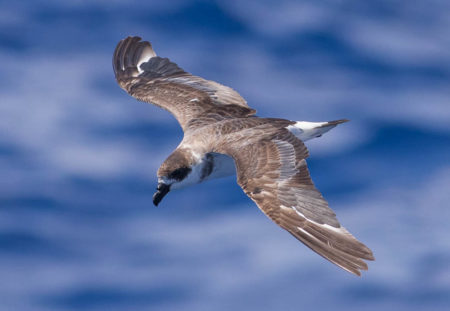
BirdsCaribbean is excited to announce 2018 awards for the David S. Lee Fund for the Conservation of Caribbean Birds. Five young scholars will carry out important research that will increase our knowledge of Caribbean birds and the actions needed to conserve them. The 2018 award recipients are Yvan Satge, Janine Antalffy, Juan Carlos Fernandez-Odoñez, Eduardo Manuel Llegus-Santiago, and Holly Garrod.
The David S. Lee Fund was established in 2016 to recognize the scientific and conservation efforts of David S. Lee, a biologist and naturalist dedicated to Caribbean biodiversity. The award funds innovative avian conservation research in the Caribbean. All projects demonstrate a commitment to engaging with local scientists, government officials, organizations and communities, as appropriate, to involve them in the research, share results, and build interest in local birds and their conservation. The projects are described below.
Thanks to support for the fund from a number of generous donors, BirdsCaribbean is able to provide a grant of $1,000 to each of the 2018 recipients. Congratulations to these dedicated and hard-working scholars, who we are confident will make important discoveries that will lead to enhanced conservation efforts and awareness of our amazing birds. Several students (Holly Garrod, Spencer Shubert, Maya Wilson, Paige Byerly) that received support last year have written blog articles sharing their exciting findings. We wish this new flock of Dave Lee award recipients all the best in their upcoming field seasons and look forward to hearing about their results in future articles and publications.
Foraging choices of the Diablotin Black-capped Petrel: using spatial ecology and diet to inform conservation
Yvan Satge, Clemson University
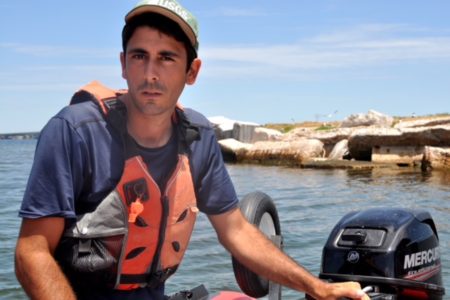
The Diablotin (Black-capped petrel; Pterodroma hasitata) is one of the most endangered seabirds in the western north Atlantic and one of only two extant seabird species endemic to the Caribbean. Although loss of terrestrial breeding habitat is a primary threat to the species, disturbances affecting the marine environment, which have been under-studied, are also likely to impact the survival of the population. Yvan Satge will study the diets of adult and juvenile Diablotin through novel DNA analysis of fecal samples collected at nest sites in the Dominican Republic. Data will inform conservation efforts by the Black-capped Petrel Working Group regarding use of marine resources by breeding Diablotin. The success of this project will be measured by evaluating diet composition and comparing those results to at-sea habitat use by tracked birds to assess the distribution of prey in the marine environment.
Conservation biology of the Bahama Oriole, a critically endangered island endemic
Janine Antalffy, University of Maryland, Baltimore County
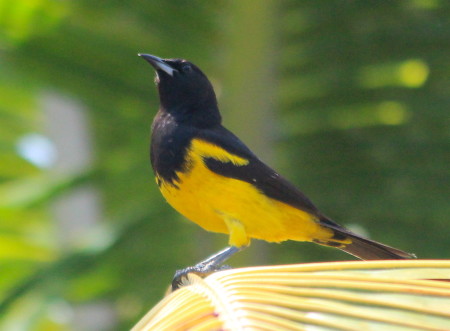
The Bahama Oriole (Icterus northrop) is a critically endangered songbird restricted to the Andros island complex in The Bahamas. Having disappeared from the neighboring island of Abaco in the 1990s, a 2011 study suggested that fewer than 300 individuals remained on Andros. Little is known about life history traits and causes of population decline of this species. Janine’s research will contribute knowledge to inform conservation strategies for the species through addressing three questions about the Oriole, including assessing genetic diversity and connectivity between populations in the Andros Islands, assessing the response of this species to logging (to estimate population size during wholesale clearcutting in the mid 1900s), and distribution modelling to look at past populations on Andros and for the extinct Abaco population. These data will be useful for The Bahamas government to determine if the species should be managed as one or several populations, and to guide the reintroduction of the Bahama Oriole to Abaco.
Updating information about Audubon’s Shearwater (Puffinus lherminieri loyemilleri) at Los Roques archipelago (Venezuela)
Juan-Carlos Fernandez Ordoñez, Fundación Científica ARA MACAO
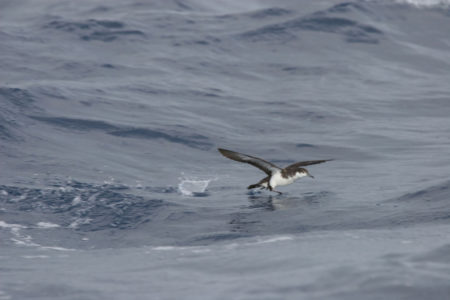
Audubon’s Shearwater (Puffinus lherminieri) is a small seabird that inhabits warm waters, mostly in the tropics. It breeds in colonies on islands and offshore cays. Once common, it’s status is now vulnerable due to disturbance and loss of breeding habitats. Audubon’s Shearwater is known to breed in the islands of the Los Roques archipelago off the Caribbean coast of Venezuela. Thanks to its strategic geographical location, the 314 islands, cays and islets of this archipelago provide important stopover and breeding sites for migratory and endemic birds. Juan-Carlos will revisit the remote and unspoiled Los Roques Archipelago to locate and survey nesting populations of Audubon’s Shearwater. JC will also identify and describe threats at the breeding sites. These colonies have not been visited in many decades, thus JC’s work will fill in major gaps in our understanding of of the status of these nesting populations. In his analysis, JC will test occupancy models as a much faster way of monitoring remote populations. He will share his results with local managers to aid conservation efforts in the archipelago.
Restoration and Monitoring of Nesting Areas of Shorebirds in the Punta Cucharas Natural Reserve, Ponce, Puerto Rico.
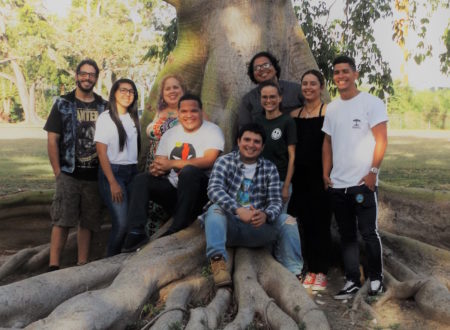
Eduardo Manuel Llegus-Santiago, University of Puerto Rico at Ponce
Eduardo will work to restore and monitor beach-nesting bird habitat in Punta Cucharas Natural Reserve, an estuary ecosystem located at southern Puerto Rico, in the City of Ponce . This community-centered project will rebuild fences that were created to protect birds from invasive dogs, cats, and vehicles during their nesting. The project includes the restoration of the fence and monitoring of the birds with volunteers and an educational program to teach local communities about shorebirds with the production of a bird guide for the area to stimulate bird-friendly tourism. Eduardo will also monitor survival rates of shorebirds in the restored area and compare them with other colonies within the natural reserve.
A tale of two todies: understanding how vocalizations mediate hybridization between two sympatric species
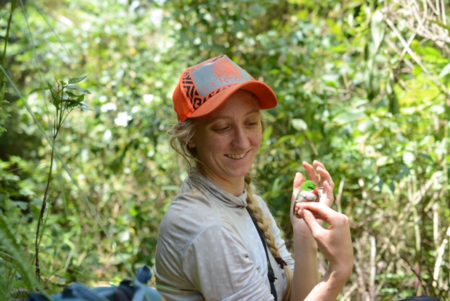
Holly Garrod, Villanova University
Climate change and other human disturbances are causing range shifts in bird populations around the world. In some cases, species that were previously separated may come into contact and hybridize, which ultimately can result in long-term losses of biodiversity. In the Dominican Republic, Broad-billed and Narrow-billed Todies separate on an elevational gradient, with the Broad-billed Tody (Todus subulatus) in lowland wet forests and the Narrow-billed Tody (Todus angustirostris) in montane cloud forest. Climate change may push Broad-billed Todies upslope, increasing the overlap (sympatry) in the two species’ ranges at mid-elevation. Increased competition and hybridization could disproportionately harm one of the species, most likely the Narrow-billed Tody, because the high-elevation tody has “nowhere to go.” Holly will use playback experiments to investigate the extent to which the two species recognize and respond to each as competitive threats (e.g., for males defending territories) and as potential mates. If species recognition mechanisms are imperfect, this could lead to hybridization. To date, one such hybrid has been documented. Holly’s research will likely yield important insights about different ways in which behavior mechanisms influence hybridization. Holly’s research in 2017 (supported with David Lee funds) examined nesting success of todies in different habitats – read about her exciting results here.
To learn more about the David S. Lee Fund for the Conservation of Caribbean Birds, click here. If you would like to contribute to the fund and help support future projects, click here. You can choose to designate your gift to the David S. Lee Fund.
BirdsCaribbean thanks the scientists that provided thoughtful and constructive reviews of the proposals. We are very grateful to all that have donated to the David S. Lee Fund. We are pleased and proud to honor Dave’s legacy with the funding of these exciting projects that will advance the development of young Caribbean scientists and contribute to the conservation of Caribbean birds.

Happy to see so many good projects being supported by the David S. Lee Fund.
Best wishes to all for a great field season.
(Dave was my husband.)
So good to hear from you Mary Kay, and thank you to you and David for funding support and inspiration for this fund. I feel like Dave’s spirit lives on in these great students and the good work they are doing! Best, Lisa Sorenson